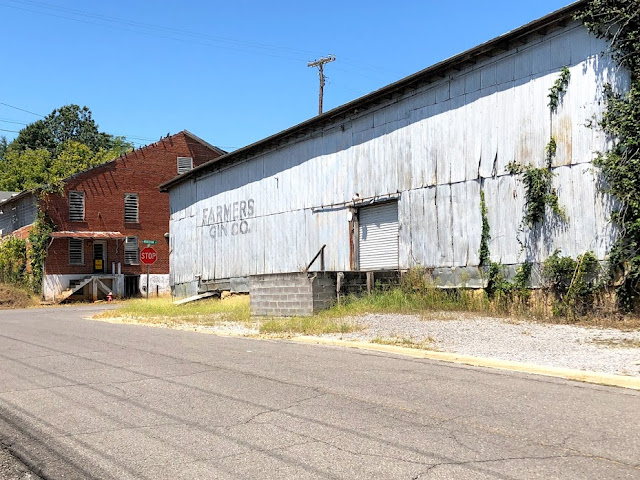This made-for-television film was first broadcast on April 22, 1976, on the NBC network. Perhaps it received a re-broadcast or two, but it seems to have fallen off the map since then. As noted below, there was a VHS release but that's no longer available in the usual places. Even that bastion of obscure films and television modcinema doesn't have it. The video does turn up in the collections of about 25 libraries.
I don't think I've ever seen it; I was living in Auburn at the time, working for the university and not watching much television. After all, that was the ancient times before cable and all we received by antenna were a few Montgomery and Columbus, Georgia, stations, and perhaps now and then a fuzzy one from Atlanta.
Yet the thing seems familiar. That may be due to the presence of two veteran actors I am familiar with, Arthur Hill as Judge Horton and Vera Miles as his wife. Anyway, I thought I would cover this item in my blog series of movies with Alabama connections. Perhaps a future reader has seen it and will comment.
I'm not going to cover the whole Scottsboro Boys event in this post. There are plenty of sources for learning more, including an entry at the Encyclopedia of Alabama and one on Wikipedia. A revised 2007 edition of Dan T. Carter's classic book is also available, as are many other sources.
This film focuses on on the figure of James Edward Horton, an elected judge on the Alabama Eighth Circuit Court. The first three trials of the nine black "Scottsboro boys" for the rape of two white women took place in that town in April 1931. The trials were quick and the defendants had poor legal representation. The convictions were appealed and eventually the U.S. Supreme Court ordered new trials in a landmark decision about the conduct of such proceedings. Returned to a lower court, the case was given a change of venue and ended up in Judge Horton's courtroom in Decatur.
Horton was born in Limestone County and spent some of his childhood in Athens. After a false start at medical school at Vanderbilt, he transferred to Cumberland University in Lebanon, Tennessee, and earned both a bachelor's and a law degree there. Horton served a term in the Alabama house in 1910-1914 and was elected to a senate seat, but a court position opened, and he accepted the nomination. After a time he left that court and returned to his law practice and farming. Horton eventually ran for a seat on the Eighth Circuit Court and was in his second term when the Scottsboro cases landed in his lap.
Both defense and prosecution accepted Horton. However, after the trial and conviction of Haywood Patterson, he made a scathing statement about the state's case. You can read it on Horton's Wikipedia page. As a result, he was removed from the case by the Alabama Supreme Court and then lost his reelection bid the following year. In March 1934 he sold his farm to TVA, and he and wife Anna bought another property and farmed and raised cattle. Horton died age 95 in March 1973. A statue of him was unveiled on the grounds of the Limestone County courthouse in October 2017.
The cases of the nine young men festered for decades. Not until 2013 were final posthumous pardons given to three defendants who weren't previously pardoned or whose convictions weren't overturned. One of the women, Ruby Price, eventually recanted her accusations and testimony; the other, Virginia Price, did not.
In 2010 the Scottsboro Boys Museum and Cultural Center opened to document the case and its ramifications. I've discussed a visit my younger brother Richard and I made to the museum in August 2019 here.
More comments are below.
This film was released on VHS at some point by USA Home Video, but was not available on Amazon or ebay when I checked recently. This paperback based on the screenplay did turn up on ebay. The movie was filmed in Monticello, Georgia. A trailer can be seen on YouTube.
Vera Miles as Anna and Arthur Hill as Judge HortonSource: Famous Fix
 Ruby Bates and Virginia Price
Ruby Bates and Virginia Price
The defendants in the Scottsboro trial and their lawyer, Samuel Leibowitz, at a Decatur jail. Standing, left to right: Olen Montgomery, Clarence Norris, Willie Roberson (front), Andrew Wright (partially obscured), Ozie Powell, Eugene Williams, Charley Weems, and Roy Wright. Haywood Patterson is seated next to Leibowitz.
This first edition of Carter's book, published in 1969



































































